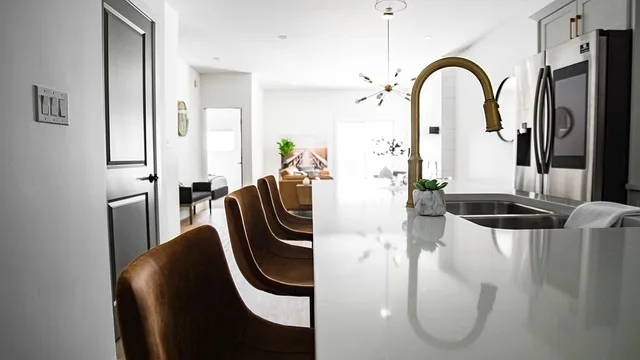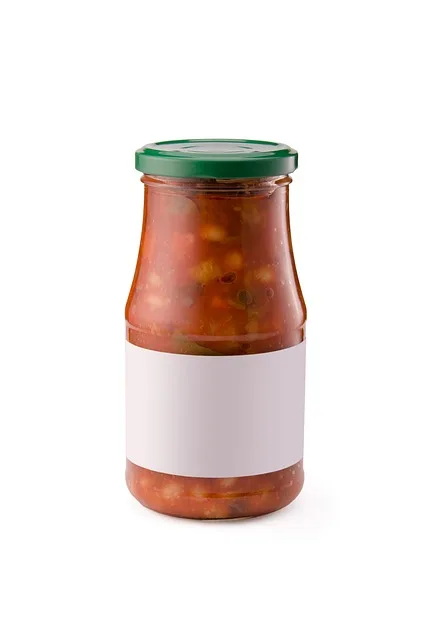First things first, prep work is key. Think of it as the foundation of a house; without it, everything else crumbles. Start by removing all the cabinet doors and hardware. This not only makes painting easier but also helps you avoid those pesky drips. Next, give those cabinets a good clean. Use a degreaser to wipe away any grime and grease that’s built up over time. Trust me, your paint will thank you!
Now, let’s talk about sanding. It might sound tedious, but it’s essential for a smooth finish. Grab some fine-grit sandpaper and lightly sand the surfaces. This helps the paint adhere better, almost like giving your cabinets a little roughing up to ensure they’re ready for their makeover. Don’t forget to wipe away the dust afterward!
When it comes to paint, choose a high-quality, stain-blocking primer. This is your secret weapon against those stubborn stains. Apply it evenly and let it dry completely. Once that’s done, it’s time for the fun part—choosing your paint color! Whether you’re going for a classic white or a bold navy, make sure to use a durable, semi-gloss or satin finish for that extra shine.
Finally, apply your paint in thin, even coats. Patience is key here; it’s better to do multiple light coats than one heavy one. Before you know it, your stained cabinets will be transformed into a stunning focal point of your kitchen!
Transform Your Space: A Step-by-Step Guide to Painting Stained Kitchen Cabinets
First things first, gather your supplies. You’ll need a good quality primer, paint (preferably a semi-gloss or satin finish for durability), sandpaper, and some brushes or a roller. Think of this as your toolkit for a mini-makeover. Now, let’s dive into the fun part!
Start by removing all the cabinet doors and hardware. It’s like taking off a pair of old shoes before slipping into something new. Next, give those cabinets a good clean. You want to remove any grease or grime that’s built up over time. Once they’re squeaky clean, it’s time to sand! Lightly sand the surfaces to help the primer stick. It’s like giving your cabinets a little exfoliation.
Now, apply a coat of primer. This step is crucial—it’s the foundation of your new look. Once the primer dries, grab your paint and start applying it with smooth, even strokes. Imagine you’re painting a masterpiece; every stroke counts! Don’t rush this part; let each coat dry completely before adding another.
From Drab to Fab: Revitalize Your Stained Kitchen Cabinets with These Expert Tips
First off, let’s talk about cleaning. It’s like giving your cabinets a refreshing shower! Grab a gentle cleaner and a microfiber cloth, and start wiping away the grime. You’d be amazed at how much dirt can accumulate over time. Think of it as peeling back the layers to reveal the hidden beauty underneath.

Next, consider a fresh coat of paint. This is where the magic happens! Choose a color that speaks to you—maybe a soft sage green or a bold navy blue. Painting your cabinets is like giving them a brand-new outfit. Just imagine how a splash of color can breathe life into your kitchen!
If painting isn’t your thing, don’t fret! You can also opt for cabinet refacing. This is like a facelift for your cabinets, where you replace the doors and drawer fronts while keeping the existing structure. It’s a quick way to achieve a high-end look without breaking the bank.

Lastly, don’t underestimate the power of hardware. Swapping out old knobs and handles for trendy ones is like adding the perfect accessories to an outfit. It’s the cherry on top that can elevate your kitchen’s style instantly.
So, are you ready to roll up your sleeves and give your kitchen cabinets the makeover they deserve? With these expert tips, you’ll be well on your way to a fab kitchen that you’ll love to show off!
The Ultimate DIY Project: How to Successfully Paint Over Stained Kitchen Cabinets
First things first, let’s talk prep. Just like a painter needs a blank canvas, your cabinets need a little TLC before you dive in. Start by removing all the hardware—think knobs and hinges—so you can get into every nook and cranny. Next, give those cabinets a good scrub with a degreaser. Trust me, this step is crucial! It’s like washing your face before applying makeup; you want a clean surface for the best results.
Now, onto the fun part: painting! Choose a high-quality primer designed for glossy surfaces. This is your secret weapon against stains peeking through. Apply it evenly, and don’t rush—patience is key here. Once the primer is dry, grab your favorite paint. A semi-gloss or satin finish works wonders in kitchens, as it’s easy to clean and adds a lovely sheen.
When you start painting, think of it like icing a cake. Use a brush for the edges and a roller for the flat surfaces to get that smooth, professional look. And remember, multiple thin coats are better than one thick one. It’s all about building that perfect finish!
As you work, take a moment to appreciate the transformation happening right before your eyes. It’s like watching a caterpillar turn into a butterfly! With a little effort and creativity, your stained kitchen cabinets can become the stunning focal point of your home. So, roll up those sleeves and let your kitchen shine!
Say Goodbye to Stains: Top Techniques for Painting Kitchen Cabinets Like a Pro
First off, prep work is your best friend. Think of it as the foundation of a house; without a solid base, everything crumbles. Start by removing all the cabinet doors and hardware. This not only makes painting easier but also gives you a chance to clean every nook and cranny. A good degreaser will work wonders here—trust me, you’ll thank yourself later when those greasy fingerprints don’t haunt you anymore.
Next, let’s talk about primer. It’s like a magic potion that helps paint stick better and prevents stains from bleeding through. Choose a high-quality primer that’s suitable for your cabinet material. Apply it evenly, and don’t rush! Patience is key here. Once it’s dry, you’ll be ready to unleash your creativity with color.
Now, when it comes to paint, opt for a durable, semi-gloss or satin finish. These types are not only easy to clean but also resist stains like a champ. Use a foam roller for a smooth finish, and don’t forget to use a brush for those tricky corners. It’s like icing a cake—take your time, and it’ll look fabulous!
Revamp Your Kitchen: Essential Tools and Tricks for Painting Stained Cabinets
First off, you’ll need the right tools. A high-quality paintbrush and a foam roller are your best friends here. Think of the brush as your magic wand, helping you reach those tricky corners and edges, while the roller covers larger areas quickly, giving you that smooth finish. Don’t forget a good primer! It’s like the foundation of your makeup routine—crucial for ensuring the paint adheres well and looks stunning.
Now, let’s chat about preparation. This step is key! Start by cleaning your cabinets thoroughly to remove grease and grime. It’s like giving your cabinets a spa day before their big makeover. Once they’re clean, lightly sand the surfaces to create a texture that the paint can grip onto. This is where the magic happens!
When it comes to choosing paint, opt for a durable, semi-gloss or satin finish. These types are not only easy to clean but also reflect light beautifully, making your kitchen feel brighter and more inviting. And here’s a pro tip: consider using a paint sprayer for an ultra-smooth finish. It’s like giving your cabinets a professional touch without the hefty price tag!
Lastly, patience is key. Allow each coat to dry completely before applying the next. Think of it as letting a fine wine breathe; the results will be worth the wait! So, roll up your sleeves, grab those tools, and get ready to transform your kitchen into a space you’ll love.
Color Your Kitchen: Choosing the Right Paint for Stained Cabinet Makeovers
First off, think about the vibe you want to create. Do you envision a cozy, rustic kitchen or a sleek, modern space? The color you choose can set the entire mood. For a warm, inviting feel, consider soft creams or earthy tones. If you’re leaning towards a contemporary look, bold colors like navy blue or even a striking black can add a touch of elegance.
Now, let’s talk about the type of paint. Not all paints are created equal, especially when it comes to cabinets. You’ll want to opt for a high-quality, durable paint that can withstand the daily hustle and bustle of kitchen life. Look for paints labeled as “cabinet-grade” or “semi-gloss.” These finishes not only look great but are also easier to clean—think of them as the superhero of your kitchen makeover!
Before you start slapping paint on those cabinets, prep work is key. Sanding down the stained surface is crucial; it’s like giving your cabinets a fresh canvas to work with. And don’t forget to prime! A good primer will help the paint adhere better and ensure that those beautiful colors pop.
Finally, don’t shy away from experimenting. Grab some sample pots and test a few shades on your cabinets. It’s like trying on clothes before you buy—this way, you’ll know exactly what works best in your space. So, roll up your sleeves, unleash your creativity, and get ready to transform your kitchen into a vibrant masterpiece!
Frequently Asked Questions
What Type of Paint is Best for Stained Kitchen Cabinets?
For stained kitchen cabinets, a high-quality acrylic latex paint is recommended. It offers excellent adhesion, durability, and a smooth finish. Additionally, consider using a primer designed for wood surfaces to enhance coverage and prevent bleed-through of the stain. Always choose a paint that is specifically formulated for cabinetry to ensure a long-lasting result.
How Do I Properly Sand Stained Cabinets for Painting?
To prepare stained cabinets for painting, start by cleaning the surfaces to remove grease and dirt. Use a fine-grit sandpaper (220 grit) to gently sand the stained areas, focusing on creating a smooth surface and ensuring good paint adhesion. Sand in the direction of the wood grain and avoid excessive pressure to prevent damage. After sanding, wipe down the cabinets with a damp cloth to remove dust, and allow them to dry completely before applying primer and paint.
What Steps Should I Follow to Paint Stained Cabinets?
To paint stained cabinets, first clean the surfaces thoroughly to remove grease and dirt. Next, sand the cabinets lightly to create a rough surface for better paint adhesion. Apply a primer suitable for stained wood to prevent bleed-through. Once the primer is dry, choose a high-quality paint and apply it using a brush or roller, ensuring even coverage. Finish with a clear topcoat for durability. Allow adequate drying time between each step for the best results.
How Can I Ensure a Smooth Finish on Painted Cabinets?
To achieve a smooth finish on painted cabinets, start by thoroughly cleaning and sanding the surfaces to remove any imperfections. Use a high-quality primer to create a uniform base, followed by a paint specifically designed for cabinetry. Apply multiple thin coats rather than one thick coat, allowing each layer to dry completely before adding the next. For the best results, use a foam roller or a high-density brush to minimize brush strokes. Finally, consider a clear topcoat for added durability and a polished look.
What Preparation is Needed Before Painting Stained Cabinets?
Before painting stained cabinets, it’s essential to clean the surfaces thoroughly to remove grease and dirt. Sanding the cabinets lightly helps to create a better surface for paint adhesion. Additionally, applying a primer designed for stained wood can prevent bleed-through and ensure a smooth finish. Make sure to remove hardware and cover areas not being painted to protect them from splatters.